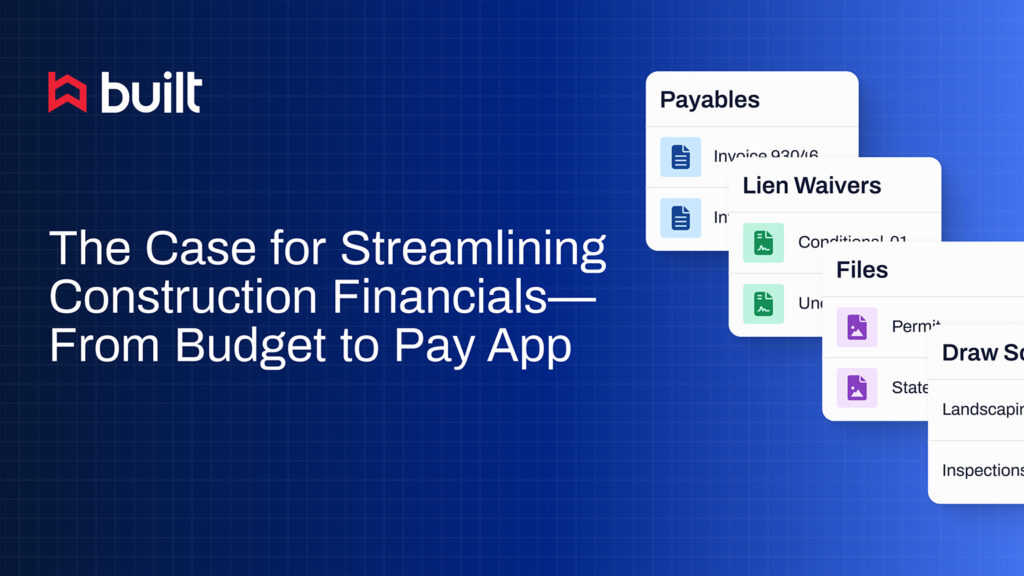
Construction Trends for 2023

The past few years have been interesting for the construction industry. Social distancing regulations and supply shortages are just a few of the challenges the industry has faced since 2020. Now as 2023 approaches, more construction trends are continuing or beginning to emerge. Contractors who proactively adapt to these trends could better position their companies to outlast the competition and even see significant growth over the next few years.
Construction trends and the forces driving them
Spurred by diverse factors including the ongoing housing shortage, legislation, environmental impacts, and global health concerns, the industry will continue to evolve in response to changes in the construction space. Here are some of the forces shaping the industry in the near future.
Technology
As seen during the pandemic, companies are aware that in-person workers aren’t always necessary. Remote project management will become more common moving forward, allowing companies to find exactly who they want to hire without geographic challenges. A centralized project management system also allows for improved collaboration across all project tiers, keeping everyone from owners to project managers to designers in the loop at all times.
The construction industry is also getting better at adopting new technologies as 2023 approaches. More companies are using drones to survey sites and inspect buildings. Robotic helpers such as exoskeletons are reducing fatigue while 3D printing machines are speeding up the build process.
Legislation
California recently banned gasoline-powered small engines on power equipment, and that ban goes into effect by 2024. For this reason, many contractors will start looking into electric-powered excavators, loaders, and other power equipment—machines companies such as Volvo and Caterpillar are already producing. If more states follow suit, these electric machines will be in high demand, and construction sites will likely become much quieter and safer for personnel.
Environmentalism
An emphasis remains on the importance of green building, and some experts believe this sub-industry will continue to grow over the next few years. General contractors, owners, developers, architects, and engineers can work together to construct buildings that limit or offset the negative impacts by using eco-friendly materials, creating their own energy, and controlling the carbon they produce will be in demand until the entire industry catches up.
As cloud-based drawing storage, document management, and digitized workflows continue to grow, the industry’s reliance on paper is likely to wane. Storing and accessing documents in cloud-based apps reduces the need for cabinets and folders for papers, shifting the focus to more sustainable, greener practices in the office.
Labor shortage
It’s not a new story, but the labor shortage continues to plague the construction industry, and 2023 looks to be more of the same. While there are fewer young people in the trades, the shortage has been exacerbated by increased construction spending and more projects. This means construction employers will likely need to pay their workers more just to add them to their ranks.
Digital transformation
If there’s one thing the pandemic taught the construction industry, it’s that streamlining the collaboration and communication between parties on projects is critical. The best way to foster this mindset is to implement construction management software. More and more companies are adopting these software platforms, giving them the ability to send and receive documents for approval, share drawings, and update budgets from anywhere in the world.
Smart contracts will also play a part in the direction the industry heads in the near future. These blockchain contracts can collect data from job sites, apps, software, cameras, and sensors to trigger lien waivers, invoices, and payments. Everyone gets paid faster and with more transparency, which is key for communication on a job site.
Also, the move toward building information modeling (BIM) is just beginning. Designers are using these 3D modeling programs to create buildings for their clients, allowing them to walk through them virtually. This approach will catch design issues sooner, helping avoid change orders and delays and improving collaboration, and will continue to grow in popularity over the next few years.
Housing shortage
Housing continues to challenge the construction industry. The year 2023 is likely to see an increase in large-scale residential projects like apartment complexes. These projects will be geared toward low-to-middle-income families. Since financing is becoming less difficult to obtain for these types of projects than it is for hospitality or retail, they’re getting the attention of big companies typically interested in commercial projects.
In addition, a continued shift toward rent-to-own construction is anticipated. To create a quick return on investment, builders will aim to leverage bulk materials, production-type efficiency, and an eager rental market.
Commercial changes
There are at least two commercial construction trends worth noting. First, construction lending is getting difficult for commercial builders and contractors. As demand for retail and hospitality dwindles, many commercial contractors may begin developing residential construction teams or departments to meet the growing needs of the housing industry.
Another trend likely to carry over from the residential industry to the commercial industry is prefabricated modular construction. Commercial contractors are focusing on building individual sections or pods and then delivering them to the site, where they’re installed and buttoned up. This allows for faster construction times and less waste over traditional commercial building, bolstering the industry’s focus on sustainability and greener building practices.
Industrial upturn
Warehouses and distribution centers are still on the rise for industrial construction. The need to transport, store, and distribute goods purchased online through companies like Amazon, Target, Walmart, and Wayfair quickly and efficiently is increasing the demand for these hubs.
With a renewed focus on becoming competitive with overseas microchip manufacturing, the U.S. semiconductor industry is poised for significant growth. Some of the biggest construction projects in 2022 were semiconductor plants, and there are likely more to follow.
Infrastructure boom
Infrastructure construction is expected to outpace residential construction for the next 10 years. With government support and spending, projects such as highway, street, and bridge construction, as well as telecommunications, energy, water, and sanitation, will continue to draw contractors’ attention and bids.
Adapt early by identifying trends now
There are great things on the horizon for the construction industry. New technology, digital transformation, and shifts to projects that will change lives are all on the docket. These changes will require contractors to stay nimble. Those who position their companies at the forefront of the trends are poised for substantial growth.
Related Posts


The Case for Streamlining Construction Financials—From Budget to Pay App







